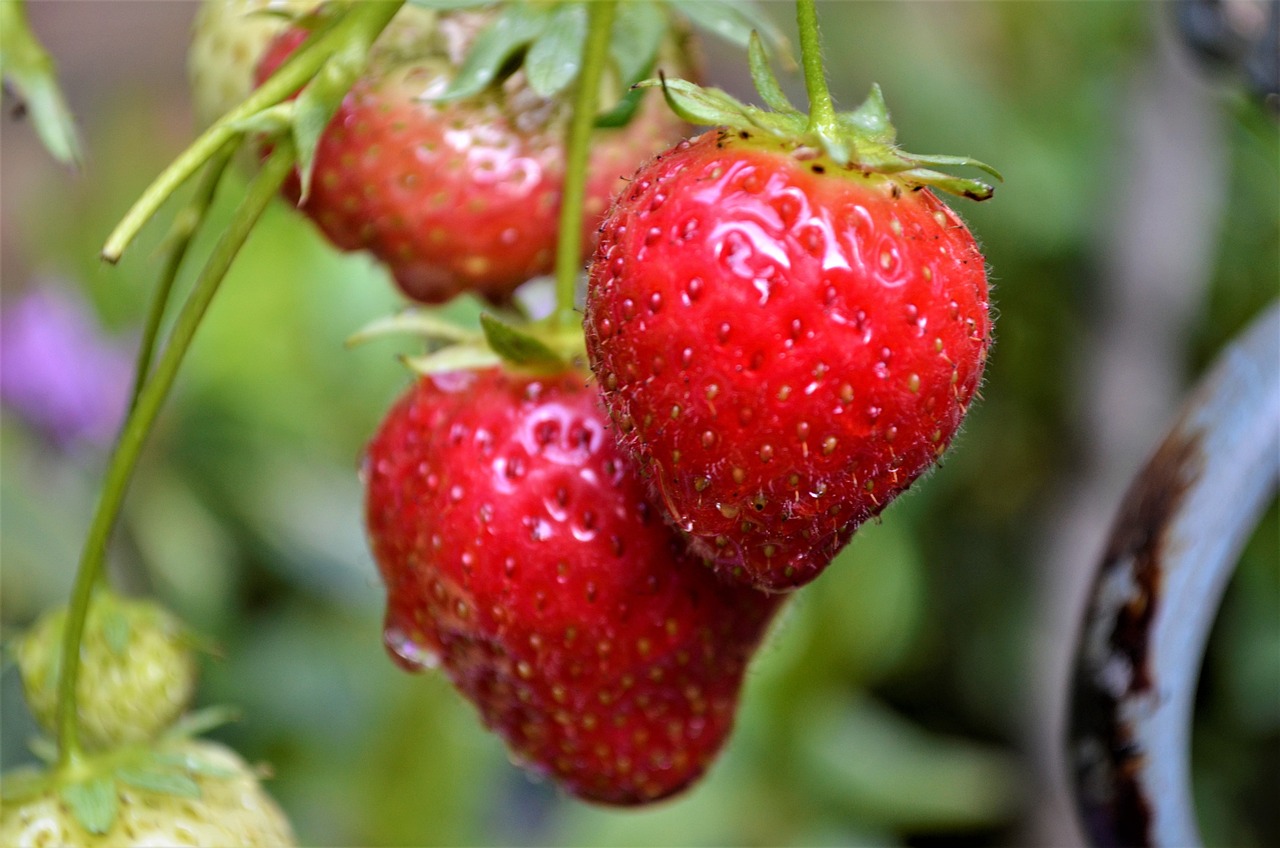
Craving the sweet taste of summer strawberries? No need to search the supermarket shelves. Imagine having juicy red strawberries right on your balcony! With just a humble bucket and 7 simple steps, you can create your little strawberry haven. No need for hard work or a big garden – just follow these secrets, and your windowsill will be filled with delicious berries.
Show off your bounty to your neighbors and become the talk of the town without revealing how easy it is. So, grab a bucket, channel your inner gnome, and get ready for a berrylicious adventure. Ready to grow your strawberries? Let’s get started!
Choosing the Right Containers
Before we dive into the juicy details, let’s prep our bucket kingdom.
- Bucket basics: Choose a food-grade plastic bucket with drainage holes – think around 5 gallons for happy strawberry roots. Don’t forget a tray underneath to catch wayward drips!
- Soil symphony: Ditch the heavy garden soil and opt for a well-draining, lightweight potting mix rich in organic matter. Coconut coir is a fantastic option, offering excellent aeration and moisture retention.
- Sunshine serenade: Strawberries crave at least 6 hours of direct sunlight daily. So, position your bucket where the sunbeams like to linger. Think south-facing balconies or sunny patios.
Selecting the Perfect Variety
Not all strawberry varieties are well-suited for container growth. Consider the following when selecting the right type of strawberries for your buckets:
Everbearing vs. Junebearing
Everbearing strawberries produce fruit throughout the growing season, while Junebearing strawberries yield a single, large harvest. Depending on your preference, choose a variety that best suits your needs.
Day-Neutral Varieties
Day-neutral strawberries are another excellent option for container gardening, as they are known for their continuous fruiting regardless of the day length. This means you can enjoy a steady supply of fresh strawberries.
Sowing the Seeds of Strawberry Satisfaction
With our stage set, it’s time to welcome the stars of the show – the strawberry plants!
- Bare-root beauties: Opt for healthy, disease-free bare-root plants from a reputable nursery. Look for vibrant crowns and plump roots.
- Potting party: Gently spread the roots out in a hole slightly larger than the crown. Nestle the crown just above the soil surface, and backfill with your magical potting mix.
- Watering wisdom: Give your newly planted strawberries a gentle drink to settle them in, but avoid overwatering. Aim for the soil to be moist, not soggy.
Feeding Frenzy: Fueling Your Strawberry Fortunes
Like any champion, our strawberry heroes need the right fuel to flourish.
- Compost cuddles: Top-dress your soil with a thin layer of aged compost every few weeks. This natural fertilizer provides essential nutrients for plump berry growth.
- Tea time for berries: Once your plants start flowering, brew up a weak comfrey or seaweed tea as a nutrient boost. Dilute it well before applying, and don’t overdo it – a light sprinkle every other week is sufficient.
- Mulch magic: Spread a thin layer of organic mulch like straw or wood chips around your plants. This helps retain moisture, suppress weeds, and keep the soil cool – a berry’s best friend!
Proper Watering Techniques
Watering is a critical aspect of strawberry care, and it’s important to get it right to avoid issues such as fruit rot and poor yield. Follow these guidelines for optimal watering:
Consistent Moisture
Strawberries require consistent moisture, especially during the fruiting stage. However, be cautious not to overwater, as this can lead to various problems, including fungal diseases.
Watering Schedule
Establish a regular watering schedule, and aim to keep the soil evenly moist, but not waterlogged. During hot, dry spells, you may need to water more frequently to prevent the soil from drying out.
Protecting Your Precious Berries from Garden Gremlins
Slugs, aphids, and the like can quickly turn your strawberry dreams into mushy nightmares. But fear not, valiant gardeners!
- Beneficial bug brigade: Attract natural predators like ladybugs and lacewings by planting companion flowers like dill, calendula, or nasturtiums near your strawberries. These friendly bugs will gladly feast on the unwanted guests.
- DIY deterrents: Craft a simple garlic spray by steeping crushed garlic cloves in water for a few hours. Strain and dilute the mixture before spraying lightly onto your plants. The pungent aroma deters many garden pests.
- Hand-to-hand combat: Sometimes, the best defense is a good offense. Gently pick off any visible pests, and dispose of them safely.
Implementing Vertical Gardening Techniques
Maximize your space and strawberry yield by incorporating vertical gardening methods. This approach is particularly beneficial for those with limited space. Here’s how you can do it:
Hanging Buckets
Consider suspending your strawberry-filled buckets using sturdy hooks or a purpose-built hanging system. This not only saves space but also helps protect the fruit from pests and diseases that may be present in the soil.
Tower Planters
Another option is to use tower planters, which allow you to grow multiple tiers of strawberries in a small footprint. This vertical arrangement is not only practical but also visually appealing.
Whether you’re a novice gardener or have years of experience, the satisfaction of harvesting and enjoying your own homegrown strawberries is truly rewarding. With the right containers, proper care, and a little creativity, you can look forward to a plentiful strawberry harvest season after season.
